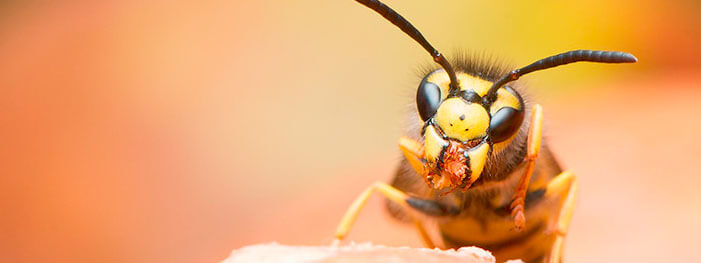 Wasps and bees are insects no one typically wants to have anything to do with. While they might be unpleasant to look at and certainly to suffer a sting from, it is important to understand that they have a vital role to play in the ecosystem. For some people though, they are commonly a nuisance and pest that cause problems for countless Canadian homeowners. Summer being their most active time. Knowing more about these occasionally aggressive insects can lead to better avoiding stings. Professional pest control for bees and wasps is the recommended solution if you spot a nest near or on your home or property.
Wasps and bees are insects no one typically wants to have anything to do with. While they might be unpleasant to look at and certainly to suffer a sting from, it is important to understand that they have a vital role to play in the ecosystem. For some people though, they are commonly a nuisance and pest that cause problems for countless Canadian homeowners. Summer being their most active time. Knowing more about these occasionally aggressive insects can lead to better avoiding stings. Professional pest control for bees and wasps is the recommended solution if you spot a nest near or on your home or property.
 Wasps and bees are insects no one typically wants to have anything to do with. While they might be unpleasant to look at and certainly to suffer a sting from, it is important to understand that they have a vital role to play in the ecosystem. For some people though, they are commonly a nuisance and pest that cause problems for countless Canadian homeowners. Summer being their most active time. Knowing more about these occasionally aggressive insects can lead to better avoiding stings. Professional pest control for bees and wasps is the recommended solution if you spot a nest near or on your home or property.
Wasps and bees are insects no one typically wants to have anything to do with. While they might be unpleasant to look at and certainly to suffer a sting from, it is important to understand that they have a vital role to play in the ecosystem. For some people though, they are commonly a nuisance and pest that cause problems for countless Canadian homeowners. Summer being their most active time. Knowing more about these occasionally aggressive insects can lead to better avoiding stings. Professional pest control for bees and wasps is the recommended solution if you spot a nest near or on your home or property.

